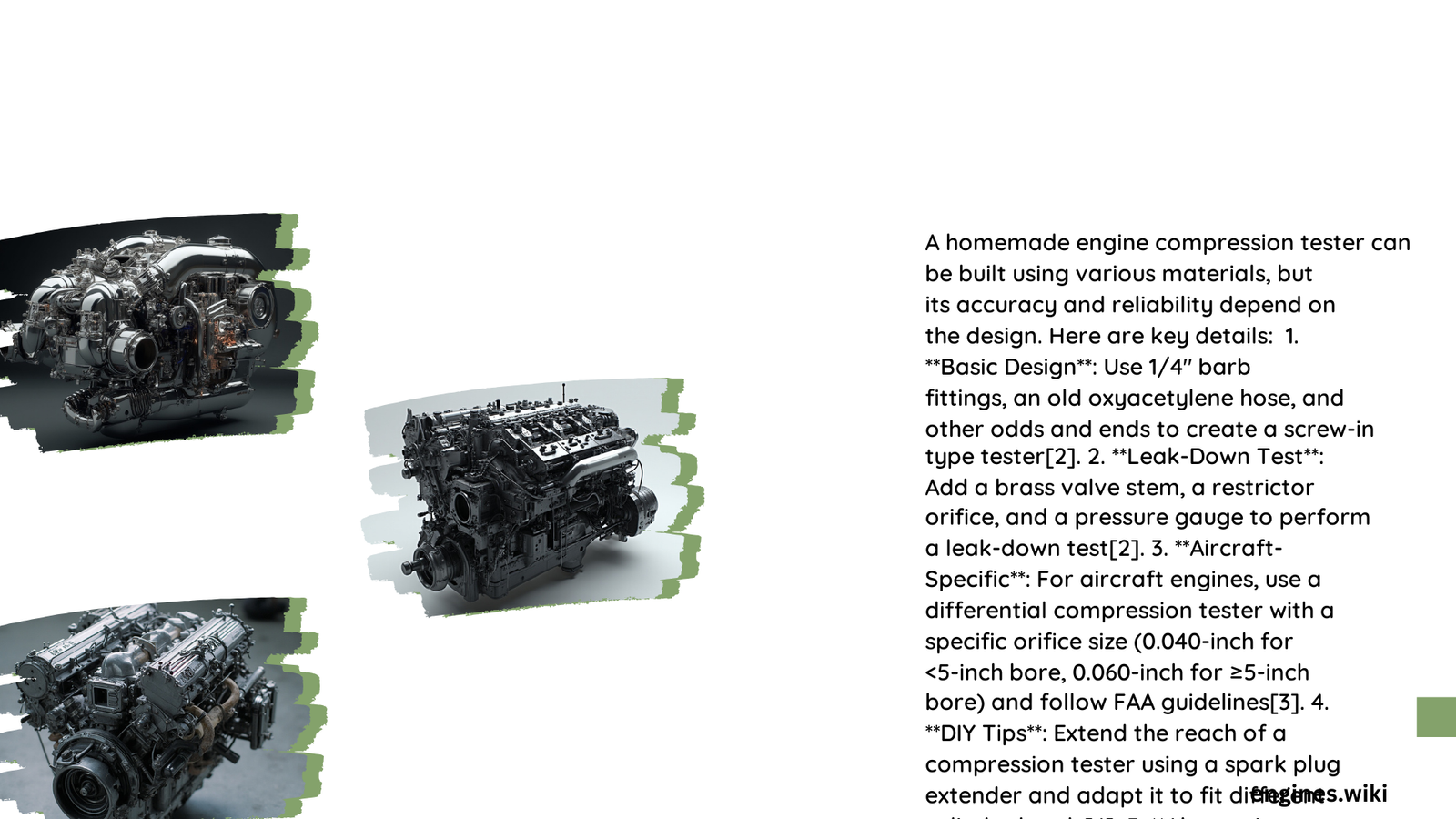A homemade engine compression tester is a critical diagnostic tool for automotive enthusiasts and mechanics seeking to evaluate engine health without expensive professional equipment. By constructing a custom compression testing device, you can accurately measure cylinder pressure, detect potential mechanical issues, and prevent costly engine failures through precise, self-manufactured testing equipment.
What Materials Do You Need for a Homemade Engine Compression Tester?
Essential Components
- Pressure Gauges
- Input pressure gauge (80 PSI capacity)
- Downstream pressure gauge
-
Accuracy rating: ±1% of full scale
-
Pressure Regulator
- Capable of maintaining consistent 80 PSI input
- Brass or stainless steel construction
- Fine adjustment mechanism
Specialized Hardware
- Restrictor orifice (specific to engine bore size)
- High-pressure compatible hoses
- Spark plug adapter
- Precision metal tubing
How Can You Construct the Compression Tester?

Precision Manufacturing Steps
- Select appropriate pressure gauges
- Fabricate restrictor orifice
- Create spark plug adapter
- Assemble connection components
- Test system integrity
| Component | Material | Estimated Cost | Complexity |
|---|---|---|---|
| Pressure Gauges | Brass/Stainless | $40-$100 | Medium |
| Restrictor Orifice | Hardened Steel | $15-$30 | High |
| Hoses | Reinforced Rubber | $20-$50 | Low |
| Spark Adapter | Modified Spark Plug | $10-$25 | Medium |
What Tools Will You Require?
Recommended Equipment
- Rotary cutting tool
- Precision lathe
- Hand grinder
- Epoxy adhesive
- Socket wrench set
- Measuring calipers
How Do You Perform the Compression Test?
Systematic Testing Procedure
- Warm engine to operating temperature
- Disable ignition system
- Remove spark plugs
- Install compression tester adapter
- Crank engine for 3-5 seconds
- Record maximum pressure reading
- Compare cylinder readings
What Are Common Challenges?
Technical Considerations
- Maintaining precise orifice dimensions
- Ensuring pressure system integrity
- Calibrating gauge accuracy
- Managing temperature variations
Cost Analysis of Homemade Compression Tester
Budget Breakdown
- Materials: $120-$250
- Tools: $50-$200
- Total Investment: $170-$450
Expert Tips for Accurate Results
Diagnostic Recommendations
- Always test when engine is warm
- Perform multiple test cycles
- Compare readings against manufacturer specifications
- Look for variations between cylinders
Safety Precautions
Critical Guidelines
- Wear protective eyewear
- Work in well-ventilated area
- Use proper electrical safety
- Follow manufacturer’s guidelines
Maintenance of Your Homemade Tester
Preservation Techniques
- Clean components after use
- Store in dry environment
- Regularly calibrate pressure gauges
- Inspect hoses for wear
Troubleshooting Common Issues
Potential Problems
- Inconsistent pressure readings
- Leaking connections
- Gauge inaccuracies
- Restricted orifice performance
When to Seek Professional Help
Diagnostic Limitations
- Significant cylinder pressure variations
- Complex engine configurations
- Specialized high-performance engines
Conclusion
Creating a homemade engine compression tester requires precision, technical knowledge, and careful implementation. By following systematic approaches and maintaining rigorous standards, automotive enthusiasts can develop a reliable diagnostic tool.
